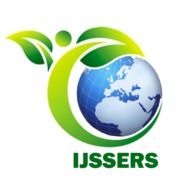The Effects of Peer Tutoring on the Mathematics Academic Achievement of Grade 10 Students: A Basis for Intervention Program
Students with difficulties learning mathematics can be found in almost every classroom. Hence, many educators are constantly striving to improve their students’ classroom achievement. One potential solution is using peer tutoring. This research focused on the effects of peer tutoring on students’ academic achievement in learning Mathematics. Five research questions and Four hypotheses were formulated to guide the study. This study utilized the pretest-posttest with control group quasi-experimental research design, involving a sample of 60 Grade 10 students of University of La Salette Inc. High School who were selected based on their 2nd quarter grade. Simple random sampling by fishbowl technique was also employed to assign students to either control or experimental group, and the same method was employed in pairing the students. The experimental group received peer tutoring, while the control group was taught using the conventional lecture method. To gather data for analysis, a researcher made questionnaire Mathematics Students Achievement Test (MAT) was crafted based on the 3rd quarter lessons as stipulated in the curriculum guide set by DEPED and validated by five experts, demonstrating a reliability index of 0.792 as determined by Kuder – Richardson formula (KR-20) which means reliable. After five weeks of intervention, post-test was given to both groups to measure and assess learnings and effectiveness of peer tutoring. The post-test was just similar to the pretest. The result of the post-test was recorded and compared with the results of the pre-test to see if there is an increase in the scores of the students and to determine the effect of the intervention in the achievement of the students in Mathematics. The data were analyzed using mean, standard deviation, paired sample t-test, and t-test for independent which were tested at 0.05 level of significance. Moreover, Cohen’s d was also used to determine the effect size of the peer tutoring. The result of the findings unveiled that the participants to both group, control and experimental group showed that there is a significant difference occurred in students’ academic achievement which means that there is an improvement in the academic achievement of students after the interventions. However, students who were exposed to peer tutoring with Cohens d= 1.07 (large effect) achieved higher scores and exhibited notably superior performance compared to those who exposed to the traditional talk and chalk teaching method with Cohens d= .483 (small effect) which implies that even if there is a significant difference of the scores of the students exposed to traditional teaching, the effect size indicates that there is only a small effect or small improvement. In connection to the findings, the study recommends that teachers should explore more strategies and interventions that will help students in learning mathematics to achieve better academic achievement in the said subject. And since, peer tutoring demonstrated greater effectiveness and contributed to heightened mathematics achievement compared to conventional teaching methods, it is recommended that mathematics educators should embrace and adopt this as an intervention program to help students improve their academic achievements in Mathematics. Future researchers should encompass a larger sample size, different research locations, and additional factors that were not considered in the present study. Moreover, other techniques that help students perform better in mathematics should be explored.


Leave a Reply
Want to join the discussion?Feel free to contribute!